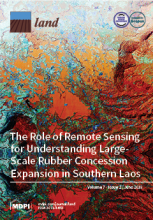Land Library
Welcome to the Land Portal Library. Explore our vast collection of open-access resources (over 74,000) including reports, journal articles, research papers, peer-reviewed publications, legal documents, videos and much more.
/ library resources
Showing items 1 through 7 of 7.Cattle grazing and fire are common types of management on natural ecosystems, generating several threats to the conservation of native vegetation (e.g., changes in species richness, cover, and abundance, mainly of bovine-palatable species).
This study presents an integrated examination of both the ecosystem services (ES) and ecosystem disservices (EDS) associated with smallholder animal husbandry in rural livelihoods in three villages in southeast South Africa.
Mediterranean regions are likely to be the most vulnerable areas to wildfires in Europe.
Savannas are extremely important socio-economic landscapes, with pastoralist societies relying on these ecosystems to sustain their livelihoods and economy.
Rangelands throughout sub-Saharan Africa are currently undergoing two major pressures: climate change (through altered rainfall and seasonality patterns) and habitat fragmentation (brought by land use change driven by land demand for agriculture and conservation).
Agricultural expansion has eliminated a high proportion of native land cover and severely degraded remaining native vegetation. Managers must determine where degradation is severe enough to merit restoration action, and what action, if any, is necessary.
Residents of Southern Africa depend on rangeland for food, livelihoods, and ecosystem services. Sustainable management of rangeland ecosystems requires attention to interactive effects of fire and grazing in a changing climate.






